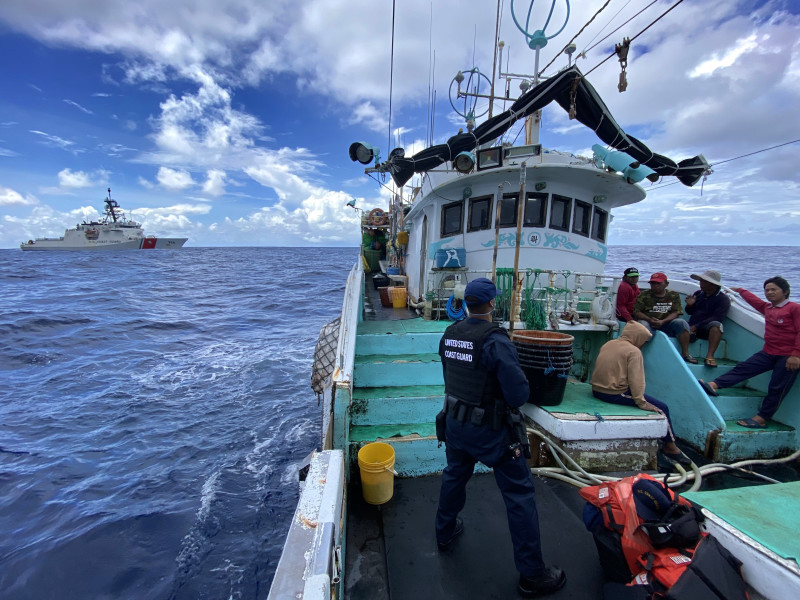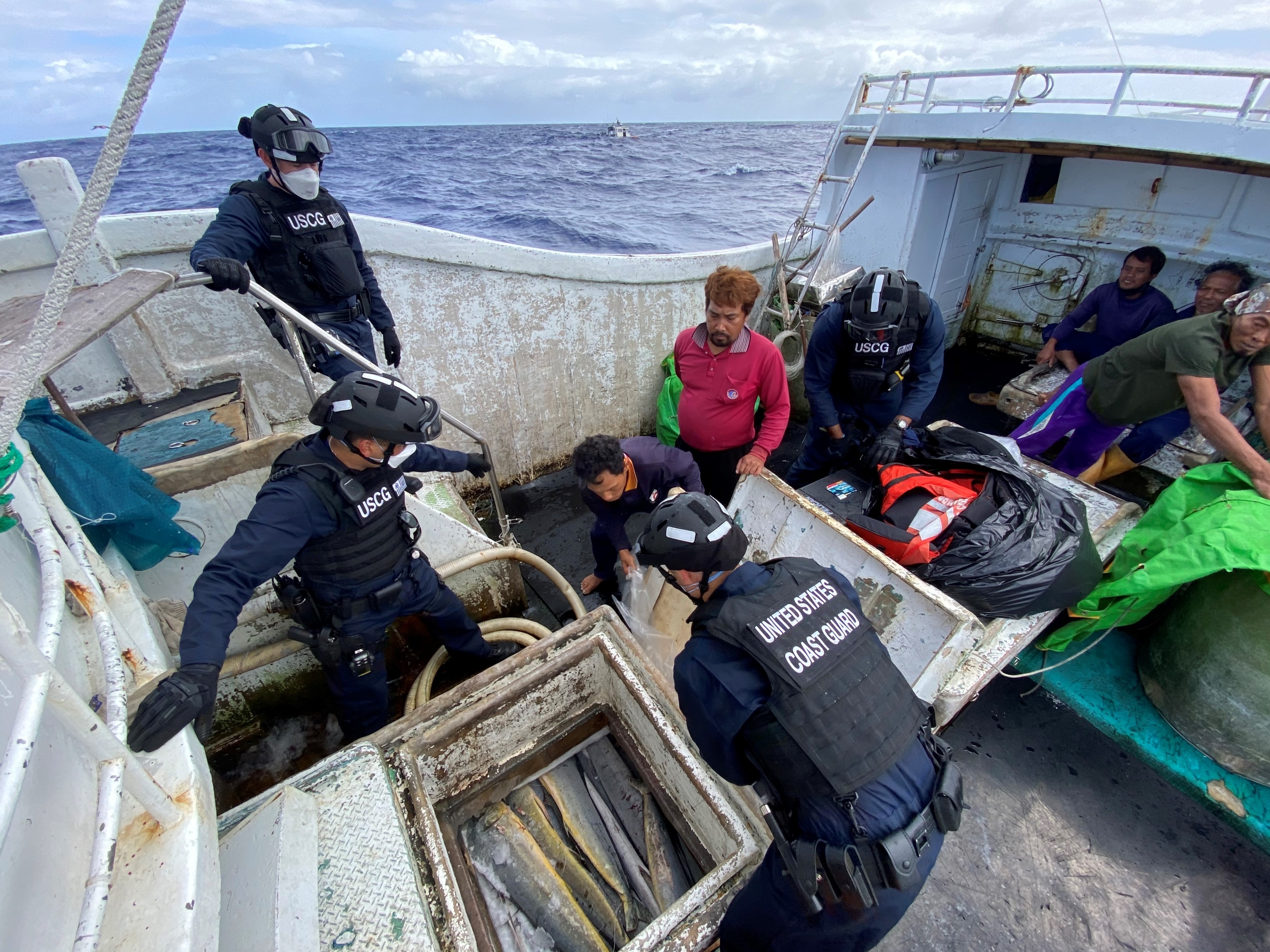The Honolulu-based Coast Guard cutter Kimball wrapped up a two-week expeditionary patrol in support of counter-illegal, unreported and unregulated fisheries enforcement, “furthering the United States’ commitment to regional security and partnerships,” according to Coast Guard officials.
The Kimball is one of the newest national security cutters to be homeported in Hawaii. The advanced 418-foot ships displace 4,600 long tons displacement. With a top speed in excess of 28 knots and range of 12,000 nautical miles, they can maintain patrols up to 90 days, carrying a crew of up to 150.
The Kimball deployment was part of Operation Blue Pacific, with goals of maintaining stability and security throughout the Indo-Pacific region. The crew is trained in “targeted and intelligence-driven enforcement actions as well as counter predatory irresponsible maritime behavior,” according to the Coast Guard.
While patrolling 3,600 miles in the Philippine Sea, the Kimball’s law enforcement team conducted its first ever at-sea boarding. The mission included multilateral fisheries enforcement on behalf of international management groups such as the Western and Central Pacific Fisheries Commission.
The WCPFC is an international body made up of 43 nations and international organizations. Members agree to allow the 13 countries in the pact to board and record any potential violations on their nationally flagged vessels. The findings go to the WCPFC, who notifies the vessel's flag state of the suspected infraction for further investigation.
“Our presence in the area shows our partners the Coast Guard’s enduring efforts to provide search and rescue response and oversight of important economic resources,” said Lt. Cmdr. Drew Cavanagh, operations officer for the Kimball. “The ongoing presence of a Coast Guard cutter in this part of the Pacific to assist in determining compliance with conservation management measures established by the WCPFC demonstrates the U.S. commitment to the region and our partners."

“The Coast Guard combats illegal fishing and other maritime threats across the Pacific to protect the United States and Pacific Island countries’ resource security and sovereignty,” according to the Coast Guard. “Combating illegal fishing is part of promoting maritime governance and a rules-based international order that is essential to a free and open Oceania.”
While on patrol the Kimball briefly diverted to assist in a search and rescue case in the Federated States of Micronesia where they utilized a small, unmanned aircraft system, or sUAS. The drone “expands maritime domain awareness and provides persistent airborne surveillance on maritime hazards, threats, and rescue operations,” the Coast Guard says.
“Training is also an important component of underway time and affects our readiness,” Lt. j. G. Joseph Fox, assistant combat systems officer for the Kimball. “The team conducted law enforcement training as well as disabled vessel towing training for our newest crewmembers.”







